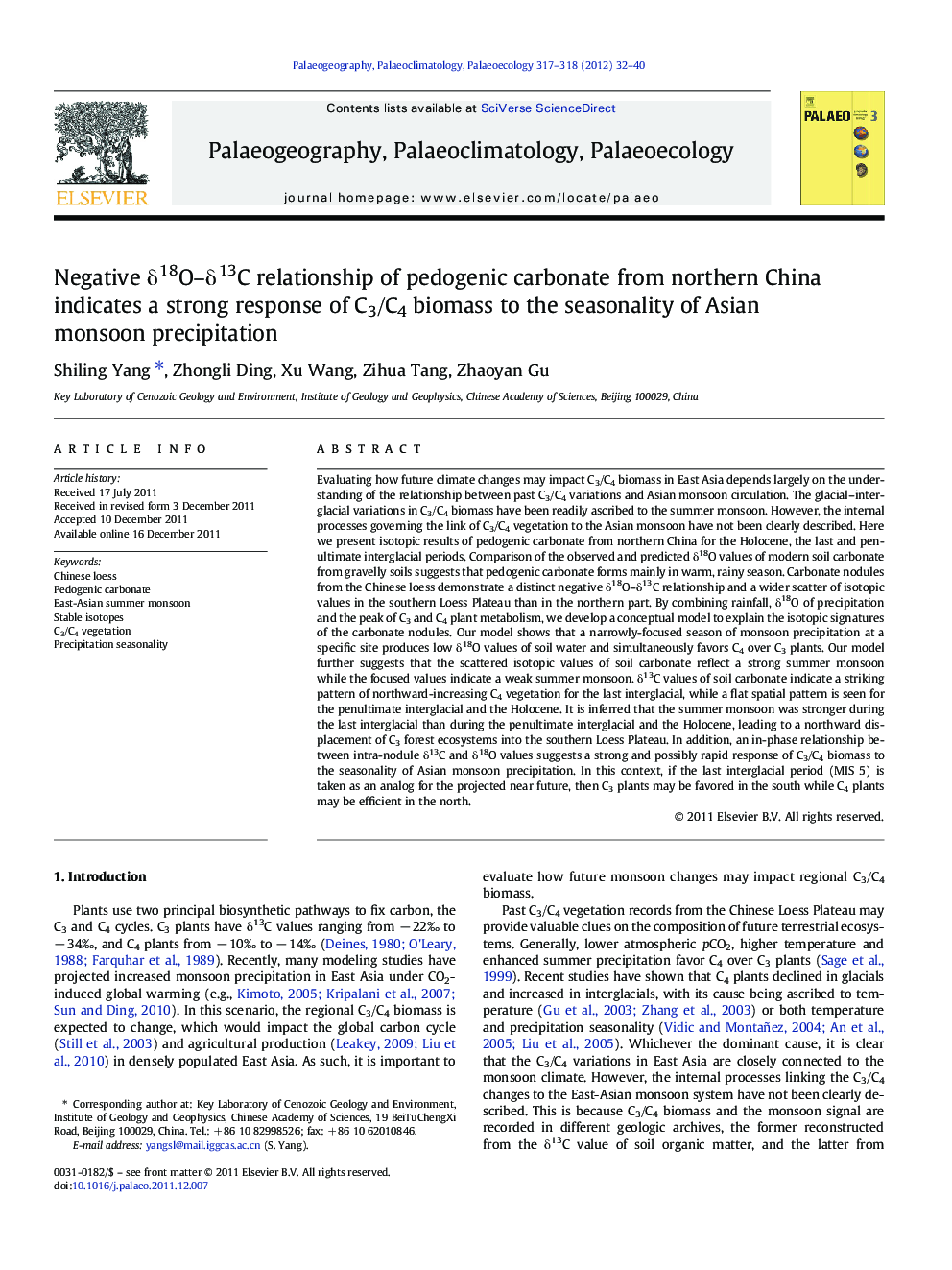| Article ID | Journal | Published Year | Pages | File Type |
|---|---|---|---|---|
| 6350566 | Palaeogeography, Palaeoclimatology, Palaeoecology | 2012 | 9 Pages |
Evaluating how future climate changes may impact C3/C4 biomass in East Asia depends largely on the understanding of the relationship between past C3/C4 variations and Asian monsoon circulation. The glacial-interglacial variations in C3/C4 biomass have been readily ascribed to the summer monsoon. However, the internal processes governing the link of C3/C4 vegetation to the Asian monsoon have not been clearly described. Here we present isotopic results of pedogenic carbonate from northern China for the Holocene, the last and penultimate interglacial periods. Comparison of the observed and predicted δ18O values of modern soil carbonate from gravelly soils suggests that pedogenic carbonate forms mainly in warm, rainy season. Carbonate nodules from the Chinese loess demonstrate a distinct negative δ18O-δ13C relationship and a wider scatter of isotopic values in the southern Loess Plateau than in the northern part. By combining rainfall, δ18O of precipitation and the peak of C3 and C4 plant metabolism, we develop a conceptual model to explain the isotopic signatures of the carbonate nodules. Our model shows that a narrowly-focused season of monsoon precipitation at a specific site produces low δ18O values of soil water and simultaneously favors C4 over C3 plants. Our model further suggests that the scattered isotopic values of soil carbonate reflect a strong summer monsoon while the focused values indicate a weak summer monsoon. δ13C values of soil carbonate indicate a striking pattern of northward-increasing C4 vegetation for the last interglacial, while a flat spatial pattern is seen for the penultimate interglacial and the Holocene. It is inferred that the summer monsoon was stronger during the last interglacial than during the penultimate interglacial and the Holocene, leading to a northward displacement of C3 forest ecosystems into the southern Loess Plateau. In addition, an in-phase relationship between intra-nodule δ13C and δ18O values suggests a strong and possibly rapid response of C3/C4 biomass to the seasonality of Asian monsoon precipitation. In this context, if the last interglacial period (MIS 5) is taken as an analog for the projected near future, then C3 plants may be favored in the south while C4 plants may be efficient in the north.
⺠Pedogenic carbonate from the Chinese loess shows a negative δ18O-δ13C relationship. ⺠Precipitation seasonality produces a negative δ18O-δ13C relationship. ⺠A strong response of C3/C4 plants to the seasonality of Asian monsoon precipitation. ⺠The East-Asian summer monsoon was stronger in MIS 5 than in MIS 1 and MIS 7.
